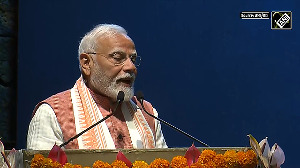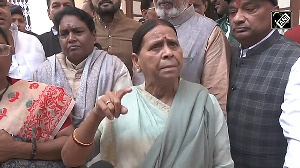
There were nervous moments…we knew we were taking a risk, but in the end we succeeded and I’m extremely happy, says S Arunan, project director, Mars Orbiter Mission in an interview with Rediff.com.
For 15 months we worked day and night on this mission and in the end it all worked out well.
This was different compared to the Chandrayaan mission. It was tougher and we were faced with the immense challenge of communicating with satellites across 400 million kilometres. In the past, we had not gone beyond 36,000 kilometres.
This was one of the biggest challenges for us. The ability to communicate is an extremely crucial feature on such missions. ISRO’s (Indian Space Research Organisation) communication systems were perfect and worked as expected.
At the time of the pre-launch it was upsetting that the cost of the mission was being highlighted and talked about. But that is all behind us now and we ensured a successful mission at a lower cost.
The Mars Orbiter Mission is really a cost effective mission. In fact, it is less than one-tenth the cost of what the United States has spent on MAVEN (the Mars Atmosphere and Volatile Evolution space probe designed by NASA to study the Martian atmosphere).
The success rate of such missions has not been high but we were confident. We were under a lot of stress and worked late in the night. We wanted the mission to be a success at any cost and put India on the map.
I beat stress by watching James Bond movies after work. I am a James Bond fan and I consider our roles similar. Like all of us at ISRO, James Bond has this ability to complete very difficult assignments.











 © 2025
© 2025